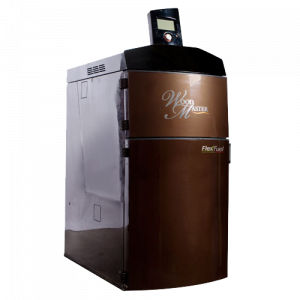Last month, we examined economizers and the role they can play in an effective boiler room solution. Biomass is any organic matter than can be used as an energy source. Because these materials contain stored energy derived from the sun, and are technically carbon neutral, power and heating solutions using biomass fuels are becoming an increasingly attractive option in a growing number of scenarios. The four most prevalent types of biomass fuels, according to the National Energy Education Development Project are:
- wood and agricultural – logs, chips, bark, sawdust, etc.
- solid waste – fundamentally, converting trash to energy
- landfill gas – also known as digester gas, harnessing methane gas from decaying landfill waste
- ethanol and biodiesel – purifying fermented sugars and starches found in plants, as well as reacting alcohol with vegetable oils, animal fats, restaurant grease, etc.
There are certainly reasons why biomass solutions are a worthwhile pursuit. UK-based Energy Savings Trust notes that wood burning systems, for example, are carbon neutral – the CO2 emitted from burning it is equal to the amount absorbed during plant growth. There are considerations that need to be made, such as harvesting (it takes much longer to grow products than to harvest them), manufacturing and delivering the fuel to the system, but this type of bio-fuel has much lower environmental impact than fossil-fuels if locally and responsibly sourced.
This is not to say that biomass boilers are an easier solution. Harmful byproducts of incomplete combustion are still a concern to be addressed. Efficient combustion and effective delivery/circulation of energy are crucial to ensuring an environmental and monetary payoff with biomass boilers. Buffer tanks are one way to help ensure combustion efficiency in biomass applications. If a building needs sizable amounts of hot water, storing heat energy in ready-for-use water evens out peak demands and helps keep the boiler running at high efficiency and reduced fuel consumption (Treco Green Heat, Biomass Systems). This also significantly reduces wasteful on-off cycling.
A common fuel type in today’s market is pellet-based bio-fuel: more processed, highly condensed and easier to transport, but increasingly expensive. Even with reduced effort for transportation and storage, it is more economically viable to exercise this option when in close proximity to a local and dependable supplier. Compte-R, a biomass boiler company Cannepp represents, offers a wood chip based alternative to pellets that boasts a competitive output and efficiency.
Another example of when biomass boiler systems can be extremely useful is in Combined Heat and Power (CHP) systems, where steam to generate power requires heat that can be directed to domestic water or a process application that requires large quantities of heat energy. Wood products manufacturers, hospitals and residential complexes are scenarios in which this application would be ideal. However, the heat and power requirements need to be relatively constant in order to obtain sensible benefits. CHP environments using high pressure steam require great care taken by skilled professionals.
Therefore, many factors must be weighed when entertaining an investment in a biomass boiler as a part of your solution. These include fuel costs, operating costs, potential savings, emissions requirements, and energy needs vs. production capabilities.
This month we will take a close look at two companies with whom Cannepp is pleased to work: WoodMaster Furnaces and Compte-R Biomass Solutions. We will also delve into waste heat solutions offered by Cleaver-Brooks.

Biomass boilers vary in size and application from small residential to large industrial.

